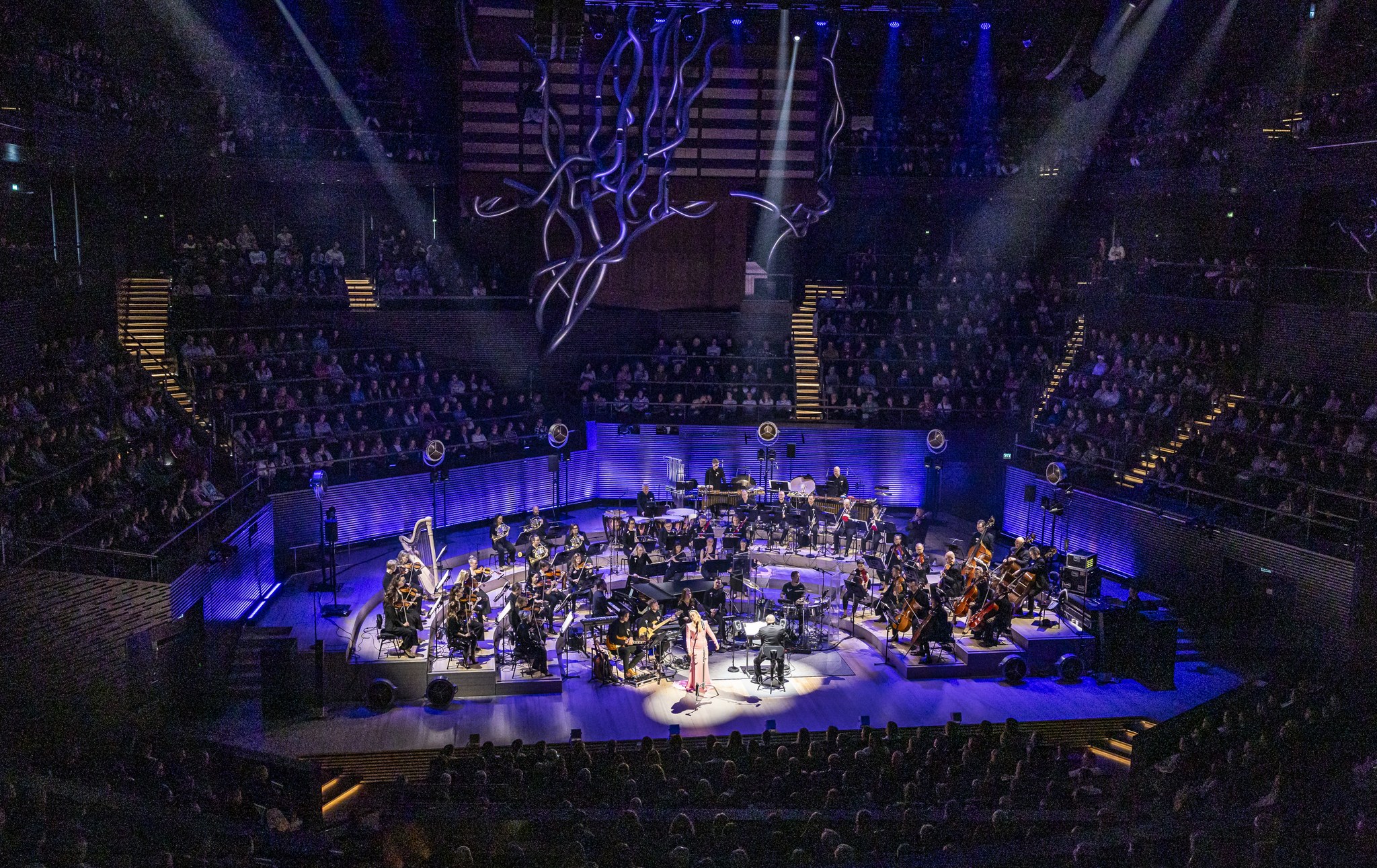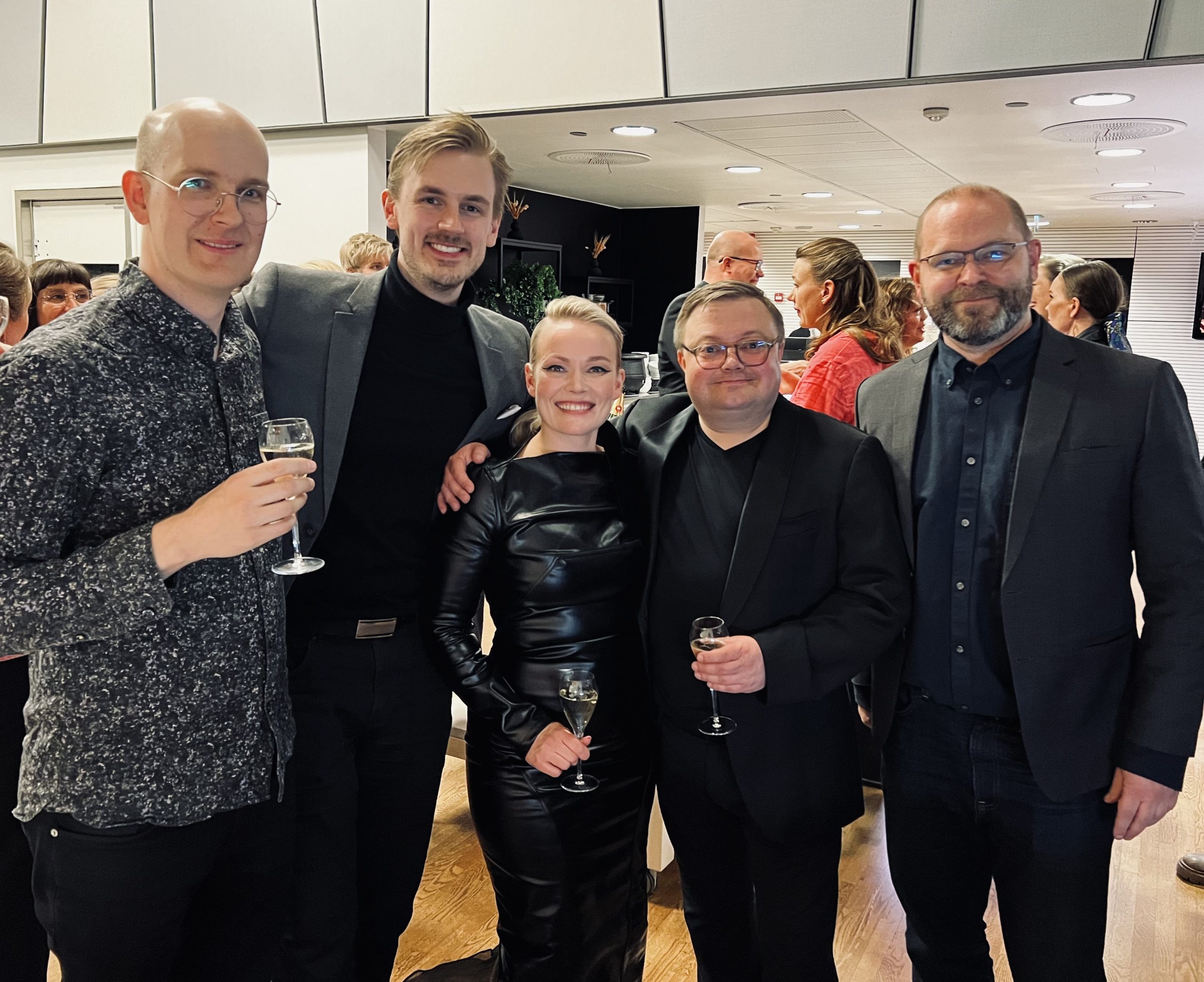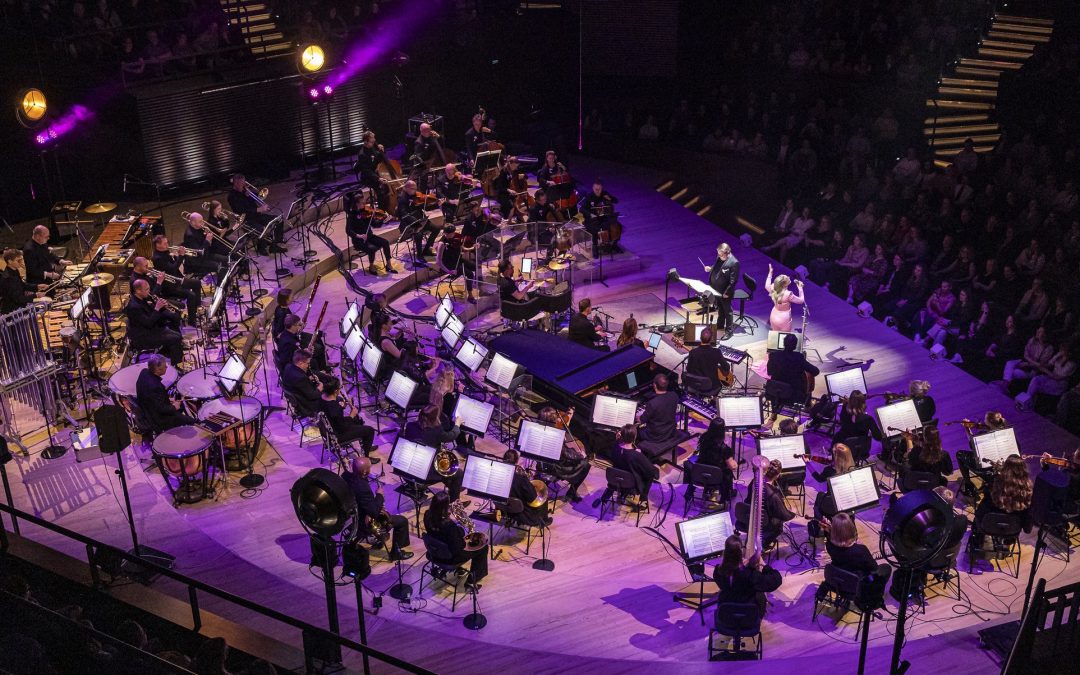In this interview, we spoke with Rolf Gustavson, a talented orchestrator, composer and arranger, who orchestrated songs for the Anna Puu and Vantaa Pops Orchestra concert to a sold-out crowd at Helsinki’s Music Centre in May. Rolf shared insights into his background, the unique challenges he faced, and how Dorico streamlined his workflow. Discover how he transformed Anna Puu’s songs into dynamic cinematic pieces with his captivating arrangements, highlighting Dorico’s pivotal role in his creative process and his strategies for overcoming challenges in large-scale music projects.

Orchestrator Rolf Gustavson
AN: Hi Rolf, thank you for taking the time to talk to us. Could you share with us your background and walk us through the process of arranging and engraving music for the Anna Puu and Vantaa Pops Orchestra concert?
RG: Hi Anastasia! Of course! I graduated as a composition major from the Sibelius Academy in 2022. For the past few years, I’ve had the pleasure of orchestrating music for films, TV, and games, as well as arranging and engraving music for live concerts. Moreover, I’m passionate about classical composition and playing rock ‘n’ roll music.
This project came through my mentor, highly esteemed film composer Pessi Levanto, who is also one of the arrangers. Pessi helped assemble this team for singer-songwriter and star of the evening, Anna Puu, and her producer-husband, Jukka Immonen. Anna and Jukka were fantastic to work with. From the start, we were tasked with selecting from a list of Anna’s songs that she wanted to perform with a big orchestra and turning those songs into cinematic versions.
Most of my arrangements featured quite a dynamic scope, ranging from the softest pianissimos to grand tutti passages engaging the whole orchestra, band, and vocalists. My aim was to create lots of intricate moving lines, find colourful textures, and build these big sonorous moments when needed. But at the core and start of everything was always the song itself and its lyrical content.
In total, I wrote five arrangements and worked on them in March and early April to meet my deadline, which was about four weeks before the concert. It’s very rare for me to be invited to bring the full scope of my musical persona into a project. And through notes, harmony, colours, textures, plucks, and runs, express what I truly feel and think about these songs. Concerts and projects like these are gems for any musician and something to be grateful for.

Anna Puu and Vantaa Pops Orchestra Concert 📸 by Sakari Manninen, courtesy of The Vantaa Pops Orchestra
AN: What were some of the unique challenges you faced in this project, and how did Dorico help you overcome them?
RG: A particular challenge for this project was its sheer scope. The orchestra was of standard size, but the addition of Anna’s band and all the rhythm parts made the score quite complicated. A unique challenge was combining pop music and classical music, really trying to bridge how those worlds can come together in the best way possible. This meant using a fair bit of ‘slashed notes,’ ‘slashed regions’ and chord symbols for the band instruments while employing more traditional techniques for the classical instruments. We wanted to leave some room for the band musicians to do their thing but also have them be able to communicate with the conductor and the rest of the orchestra. Dorico provides great tools for both of these worlds!

From left to right: arranger Sampo Kasurinen, orchestrator Rolf Gustavson, singer-songwriter Anna Puu, conductor Mikko Franck, and composer Pessi Levanto.
I tend to describe Dorico as a reliable collaborator and friend of a musician. From the get-go, you see the word ‘player’ used when assigning instruments. That already puts a composer or arranger in the mindset of appreciating the fact that we are writing music for other people to play—people who have spent a lifetime perfecting their craft and deepening their knowledge of their particular instrument. This little word, ‘player,’ makes such a difference.
- Score-First-Page-Ota-Minut-Tällaisena-Kuin-Oon-scaled
- Score-Last-Page-Ota-Minut-Tällaisena-Kuin-Oon-scaled
AN: Are there any specific features of Dorico that you find most beneficial for large-scale projects like this one?
RG: There are plenty of great features! The big and important one in a project like this is the ‘condensing’ feature. In this project, I tried condensing the horns in a new—actually old, but new for me—way, where horns 1 and 3 were on one staff and horns 2 and 4 on another, which turned out great. With condensing, it’s not only the basic function that is wonderful but also the flexibility. Moreover, the user interface is fantastic and feels like an inspiring space for music-making.
Another great feature for large-scale projects is the ‘instrument filters,’ which help when focusing on a specific section of the orchestra, like the winds or the brass (or whatever other combination of instruments). This is very helpful in the final stages of proofreading everything.
A little favorite of mine is the ‘crosshair cursor’ in engrave mode, which helps ensure everything lines up perfectly. The crosshairs are useful in any size of a project, large or small!
Lastly, cues in parts are really easy to create. We don’t often need them in the studio where every bar gets a bar number but in concert situations, cues are helpful for navigation.
Talking with fellow arranger Sampo Kasurinen, he listed the following features as his favourites: condensing, players & flows (very useful for keeping everything in the same file), page templates, reliability (even with very large files), and a well-designed user interface that is nice to look at!

Viola-Part-Excerpt-Sinä-olet-Minä-scaled
AN: You’ve developed custom lua-scripts/macros in Dorico. Can you explain how these scripts enhanced your workflow?
RG: Yes, that’s correct! These macros help streamline my workflow tremendously, and I’d be lost without them. My philosophy around macros and keystrokes is to maximize the number of tasks I can accomplish without using my mouse or scrolling through sub-menus to find what I need. Therefore, many of my macros are simple ‘toggles’ for functions that cannot be assigned as keystrokes in Dorico preferences.
For instance, I’ve created macros for properties panel commands like ‘hide player labels,’ ‘erase background,’ ‘toggle niente,’ and ‘create border.’ Additionally, I’ve created keystrokes for a few custom lines, such as ‘bring out,’ ‘optional,’ and ‘cue.’
Moreover, I’ve created a few macros that add specific texts to the dynamic suffixes (or prefixes) in the properties panel. A few examples include ‘molto,’ which I sometimes add to crescendo hairpins, as well as a macro that hides the intensity marking and adds the word ‘poco’ or the abbreviation ‘sim.’—both of which are useful little words.
Perhaps a more complicated lua-script combination, which also requires help from Stream Deck, is one that creates a ‘touch four harmonic’ with a single press of a button.
I think it is now possible to assign at least some of these as keystrokes in Dorico preferences, and I know many of my colleagues have created similar macros using tools like Keyboard Maestro. In any event, I’ve found it absolutely fascinating to experiment in the true spirit of ‘trial and error’ with these lua-scripts. I’ve attempted more complicated lua-scripts as well but have had little to no success thus far.
AN: You worked with three other arrangers: Pessi Levanto, Sampo Kasurinen, and Vili Robert Ollila on this project. How did Dorico facilitate collaboration among the team?
RG: It was absolutely delightful to be a part of this team! Pessi, Sampo, and Vili are all wonderful musicians and great colleagues.
I first designed a base template in Dorico that was then tweaked by the other arrangers. Having a uniform base template helped make our score and part layouts look very similar from chart to chart. We found it important to present conductor, Mikko Franck with a neat score that is uniform to help him quickly get a grasp of the music and always know where to look.
We kept all of our files on a shared Dropbox and it was incredibly easy to jump between Dorico projects and check out each other’s files if one of us needed help with proofreading or tweaking something small. Throughout the process, we communicated on a regular basis to ensure our individual work would benefit the bigger picture of the concert.
I presented the same question to fellow arranger Sampo Kasurinen who had some additional thoughts to share:
“Dorico is very flexible to produce different-looking results. Rolf, Pessi, and Vili for example went for a Hollywood-looking score layout, whereas I kept my scores looking more like in the European orchestral music tradition. My arrangements were not as densely orchestrated, so I felt the “traditional” approach produced cleaner results for those pieces (the most notable difference being whether every instrument is always visible in the score or not). However, it would have been very fast to switch to a unified look, in case we wanted to do that.”
AN: Following the success of the May 4th concert, what are your expectations for the reprise on September 1st?
RG: It’s really a privilege and a joy that we get to reprise this concert on September 1st. The feedback from the musicians and the audience has been very encouraging.
The concert stage for the reprise will be somewhat smaller, which has had us reworking some of the parts. We’ll have a slightly smaller woodwind section, which requires some “economic” picking and choosing on what to leave in and what to leave out. Moreover, some of the percussion parts, especially the ones suitable for keys (e.g., mallet instruments), will be replaced by samples played by a keyboardist. The strings will also be supported by a keyboardist doubling most of the lines with samples.
This reduction process was intriguing for me as I haven’t really done that before. Writing effectively for a small ensemble and finding creative solutions within a “limited space” is a good skill to have. And Dorico, with its “paste special” features “reduce” and “explode,” proved very helpful. The re-working of the arrangements was a really smooth process thanks to Dorico. I’m looking forward to hearing how the slightly reduced versions will work on September 1st.
AN: Do you have any upcoming projects that you’re particularly excited about and plan to use Dorico for?
RG: I’m planning on using Dorico for a number of exciting projects, including a new commission for a big ‘concert band competition’ piece here in Finland and more concert arrangements. On top of this, I have some orchestration work for both movies and video games lined up that I’m not in a position to speak about just yet. Dorico will be an important collaborator and an integral part of my workflow throughout the end of the year.
AN: Sounds great! Thanks for your time, Rolf, and good luck with all your future projects.
RG: Thank you for your time! I’ve been using Dorico since 2019 and it’s an honor to be able to share parts of my workflow with the readers of the Dorico Blog.




